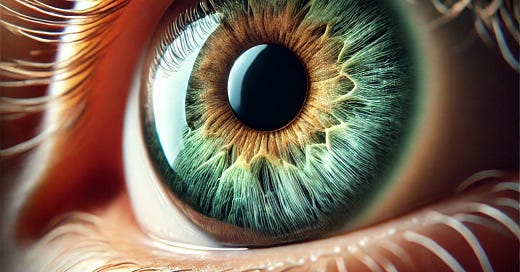By Dr. Edward Kondrot | All About Vision
Please hit the ❤️ at the top or bottom of this email to help others discover All About Vision With Dr. Kondrot. Your subscription directly supports my ongoing humanitarian work—delivering free eye surgeries and care where it's needed most.
🧠 Story at a Glance
A traumatic cataract develops after an eye injury—whether from blunt force (like a ball or fist), penetrating trauma (like a metal shard), or even surgical or radiation damage.
Unlike age-related cataracts, traumatic cataracts can form suddenly or over time, and often affect younger people.
The symptoms include blurred vision, glare, and lens clouding, but may also be accompanied by other eye damage.
Treatment may involve cataract surgery—but timing is crucial, especially if the eye is inflamed or injured in other ways.
With proper care, many patients recover vision, though prognosis depends on the extent of overall trauma.
💥 What Is a Traumatic Cataract?
A traumatic cataract occurs when an injury to the eye damages the lens—the clear structure behind your iris responsible for focusing light.
There are two main types of trauma that can cause it:
Blunt trauma (e.g., a punch, baseball, fall, or airbag injury)
Penetrating trauma (e.g., a shard of glass, metal, or wood entering the eye)
Other causes include:
Electrical shock
Infrared or ionizing radiation
Intraocular foreign bodies
Certain eye surgeries (iatrogenic trauma)
👁️ How Does Trauma Cause a Cataract?
Trauma physically disrupts the lens fibers or capsule, triggering oxidative stress, protein clumping, and scarring—hallmarks of cataract formation.
Depending on the trauma, cataracts may:
Appear immediately (especially with penetrating injuries)
Develop over weeks or months (blunt trauma)
Take on a rosette-shaped or stellate (star-like) appearance, which is characteristic of trauma
🔍 Common Symptoms
Blurred or foggy vision
Glare or halos around lights
Reduced night vision
A visible white or gray spot in the pupil (if the cataract is dense)
Double vision in one eye
Light sensitivity
Sometimes the cataract is only part of the problem—patients may also have:
Retinal detachment
Hyphema (blood in the eye)
Iridodialysis (iris root tear)
Zonular instability (weakened lens support)
🔧 Diagnosis
If you’ve experienced any kind of eye trauma, don’t delay an exam—even if your vision seems fine.
Your eye doctor may perform:
Slit lamp examination (to check the lens for clouding or shape changes)
Dilated retinal exam (to assess for retinal tears or detachment)
Ultrasound (if the view inside the eye is blocked)
OCT and anterior segment imaging (to evaluate the lens, retina, and internal eye structures)



